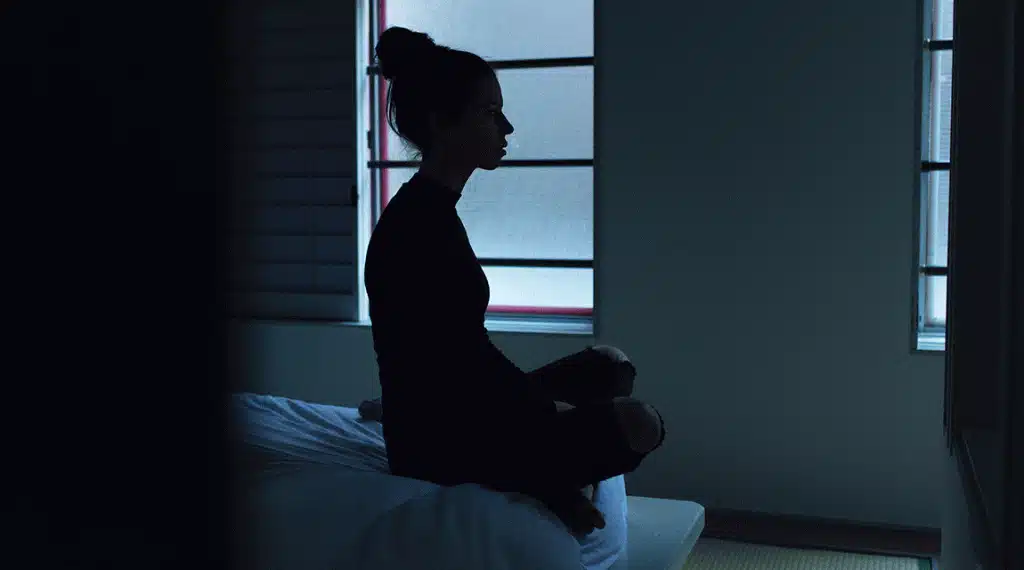According to recent research, one out of every five young people will experience some form of depression during their teen years. In addition, the suicide rate for teen girls has doubled over the past decade, and risen 31 percent among male teens. Teens who suffer from depression need effective, compassionate treatment in order to move forward into joyful and fulfilling lives.
Why are so many teens depressed? Experts ascribe the adolescent mental health crisis to a variety of factors, including the long-lasting effects of the grief and isolation caused by the pandemic, the negative impact of social media, and the ongoing political and economic uncertainty in this country and around the world. Along with anxiety, depression is one of the most common mental health conditions in adolescents.
October is Depression Awareness Month, which includes the annual Mental Illness Awareness Week in October. The month also includes a day focused around depression screenings. National Depression Screening Day 2022 falls on October 6. The goal of the depression awareness month is to help break the stigma around this mental health condition. And the goal of the depression awareness day is to give families a way to take the first step from mental health awareness to action.
The Goal of National Depression Screening Day 2022
National Depression Screening Day takes place annually on the Thursday of the first full week in October. Created in 1990 by the organization Screening for Mental Health, this depression awareness day provides an opportunity for colleges, community-based organizations, and military installations to provide screening services and resources, such as support groups, to increase mental health awareness.
Moreover, the US Preventative Services Task Force recommends that primary care doctors give depression screenings to all adults and adolescents. Regular screenings serve to catch depressive symptoms early. In addition, they help to destigmatize mental illness by bringing awareness to how common depression really is.
A depression screening on depression awareness day is not the same as a professional diagnosis. Depression screenings indicate whether a person is suffering from depressive symptoms and provide a referral for additional support if necessary. But only qualified mental health professionals can definitively diagnose depression.
Symptoms of Depression
It can be difficult for friends and family to distinguish sadness vs. depression, or to tell the difference between teen depression and typical teen moodiness. But depression in teens is severe and ongoing—it lasts longer than a sad mood does.
Expert assessment can determine whether an adolescent is suffering from depression. A depression test or depression screening can also indicate whether a teen is at risk. Such screenings look for the following signs and symptoms of depression:
- Avoiding social situations
- Loss of interest in activities they use to enjoy
- Fatigue and lack of energy
- Sense of despair, sadness, and hopelessness
- Suicidal thoughts
- Lack of motivation
- Unexplained aches and pains, headaches, or stomach problems
- Difficulty concentrating, particularly for teens who used to be focused
- Feeling worthless, irritable, and frustrated
- Low self-esteem
- Disturbed sleep patterns; sleeping too much or too little
- Changes in appetite and weight
- Substance abuse: abusing alcohol or drugs as a form of self-medication to cope with the depression.
Teens who suffer from two or more of these signs of depression, for longer than two weeks, may be experiencing a depressive episode.

Types of Depression
Depression can manifest in a number of different ways, and treatment for each type may differ in terms of approach and length of time. The main types of depression include the following:
- Major depressive disorder significantly affects daily functioning, including school, work, and relationships. It lasts for longer than two weeks, and can become acute.
- Melancholic depression is a subtype of major depression that results in extreme irritability and worrying.
- Seasonal depression is a depressed mood that is most often triggered in winter due to lack of sunlight, but can also take hold during the summer.
- Atypical depression symptoms include increased appetite/weight gain, excessive sleep, fatigue, emotional overreactions, and an extreme sensitivity to rejection.
- Psychotic depression includes symptoms of psychosis, including a loss of contact with external reality.
- Bipolar disorder encompasses a serious form of depression, in which individuals experience extreme highs and lows.

Treatment for Depression at Newport Academy
Once a teen receives a depression diagnosis, treatment can begin. At Newport Academy, we treat depression by addressing the underlying trauma, attachment wounds, and low self-esteem. Our treatment approaches for depression include the following clinical and experiential modalities:
- Attachment-Based Family Therapy (ABFT) is designed to address depression and the risk of teen suicide by repairing ruptured family relationships, so that young people feel safe enough to turn to their parents for help.
- Cognitive Behavioral Therapy (CBT) helps teens identify self-defeating thoughts and assumptions and provides valuable insight.
- Dialectical Behavioral Therapy (DBT) provides specific skills, like mindfulness and emotional regulation to address depressive symptoms.
- Experiential modalities, such as art therapy, Adventure Therapy, and music therapy, give teens ways to process their emotions through self-expression and body-based practices.
- Yoga and meditation provide positive coping skills and tools for managing stress.
In summary, both World Mental Health Day and National Depression Screening Day 2022 work to raise mental health awareness. And taking a depression screening that day might be an adolescent’s first step toward getting the help they need.
Contact us today to schedule a depression assessment with one of our teen mental health experts.
5 Key Takeaways
- According to recent research, one out of every five young people will experience some form of depression during their teen years.
- The goal of National Depression Screening Day 2022 is to give families a way to take the first step from mental health awareness to action in order to access treatment for teens.
- A depression depression screening can indicate whether a teen is at risk by reviewing a number of different signs and symptoms of depression.
- Depression can manifest in a number of different ways, and treatment for each type may differ in terms of approach and length of time.
- Once a teen receives a depression diagnosis, treatment can begin. At Newport Academy, we treat depression by addressing the underlying trauma, attachment wounds, and low self-esteem.
Frequently Asked Questions About National Depression Awareness Month and National Depression Screening Day
October is known as Depression Awareness Month. It includes several mental health awareness dates: National Mental Illness Awareness Week, National Depression Screening Day, National Bipolar Awareness Day, and World Mental Health Day.
The ribbon for depression is lime green. Wearing a lime green ribbon for depression is a way to bring awareness to the importance of identifying signs and symptoms of depression and helping those with depression to access effective mental health treatment.
National Depression Screening Day is perhaps the best known depression awareness day. It focuses on helping people access an initial screening to determine whether they need a more in-depth assessment for depression or other mental health conditions.






